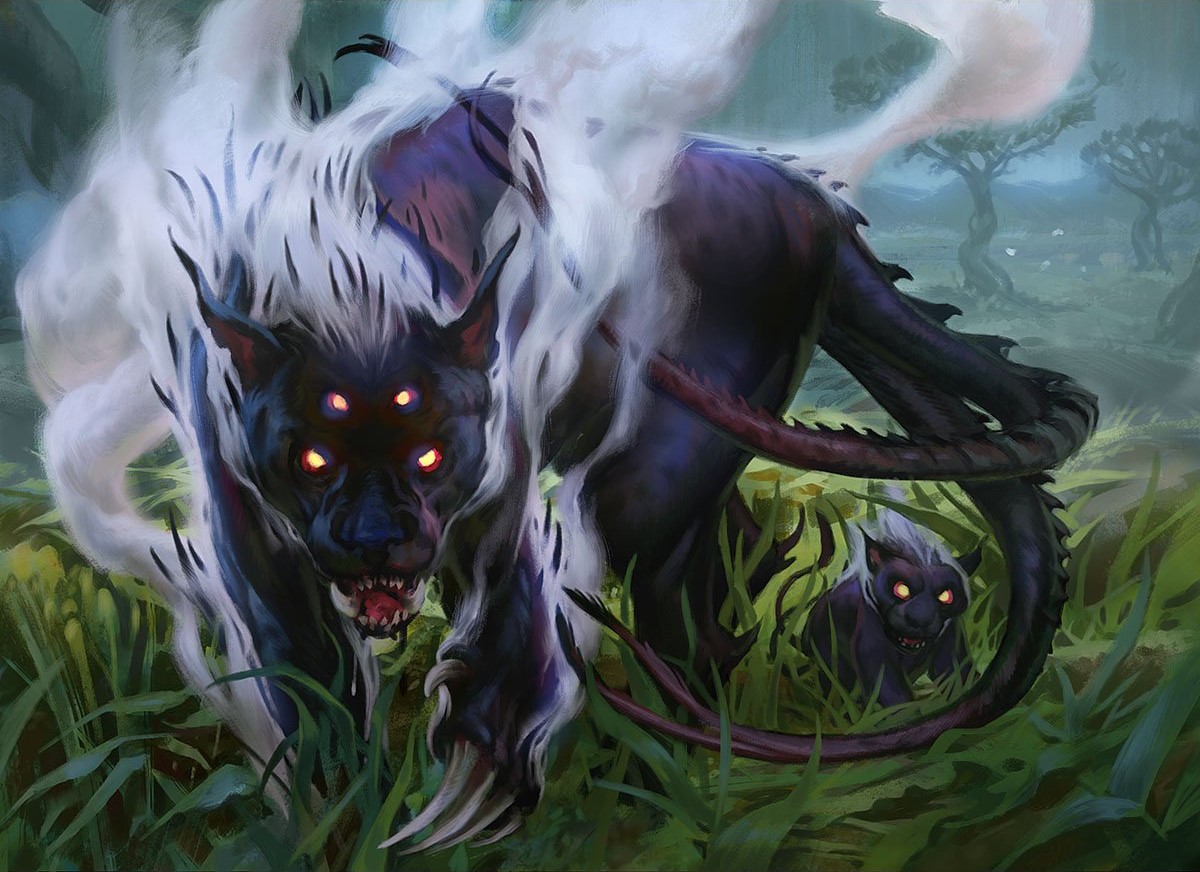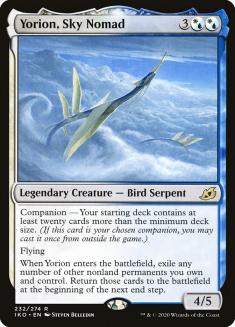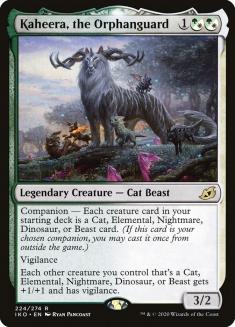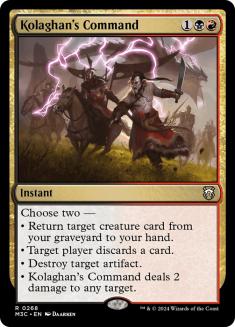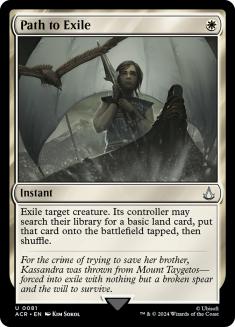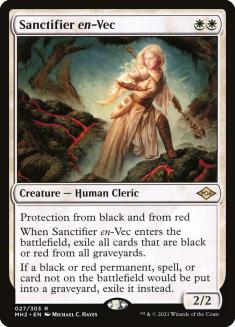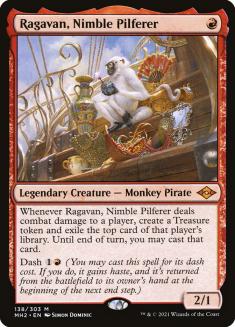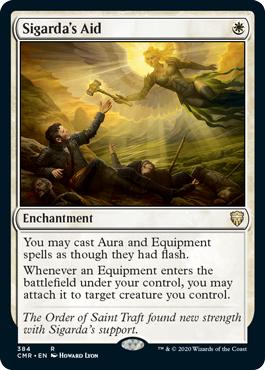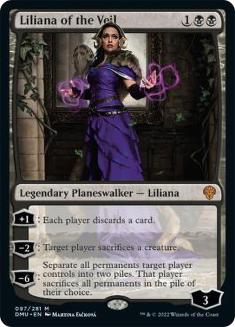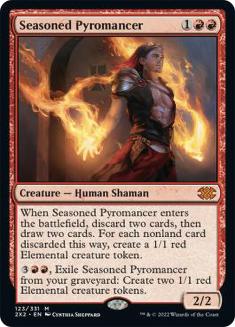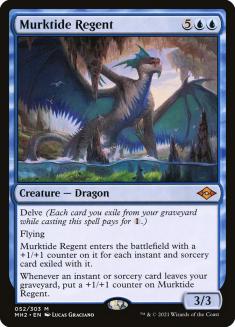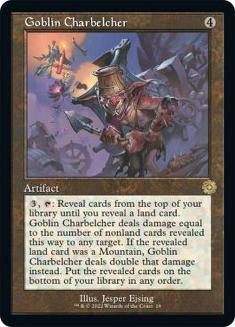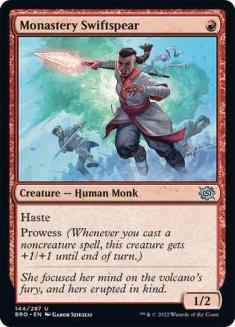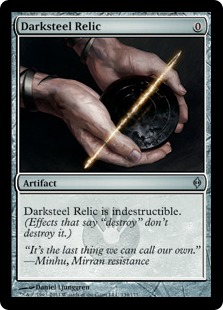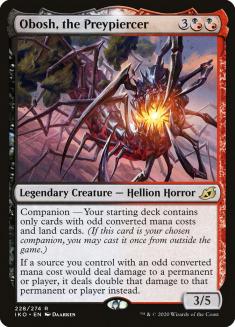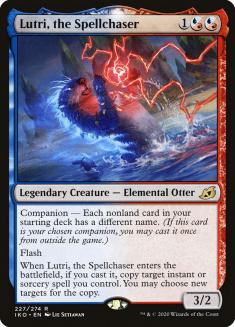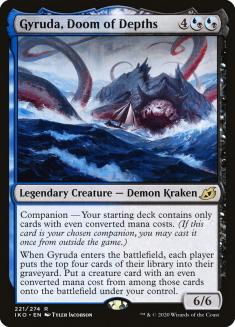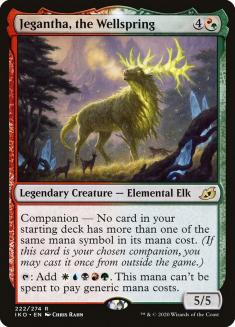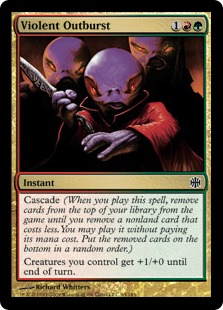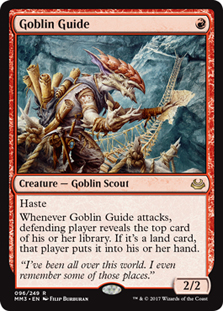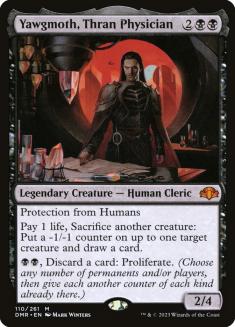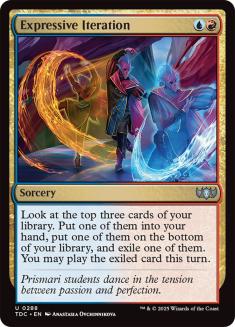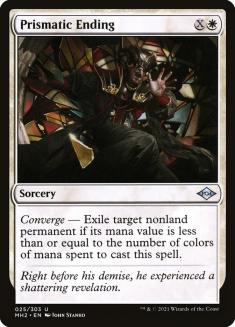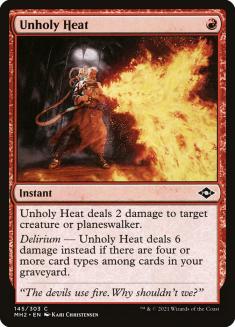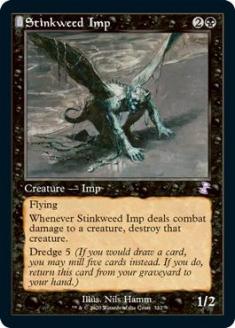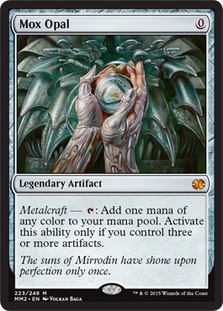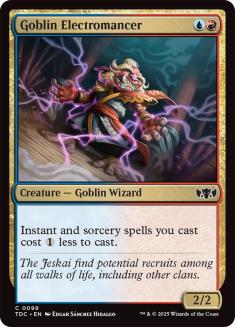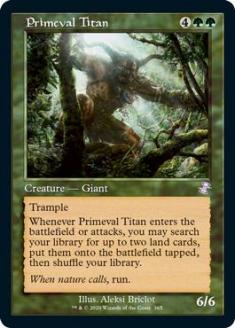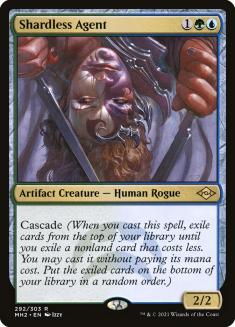Many of Magic’s important moments happen before a game starts.
Just over a week ago, Paulo covered a big one in the London part of the London mulligan. But in Modern, another one comes up nearly as often.
That’s the companion reveal. Playing with a companion shapes your plays every game as a constant action you have access to, and the companion reveal should immediately clue you in to what hands are going to be successful in a matchup.
Usually I try to be subtle when weaving together the practical and theory parts of an article, but companion is a massive elephant in the room. I haven’t checked the overall numbers, but I wouldn’t be shocked if the current companion saturation of Modern rivals that of the era that lead to the initial companion errata in the first place.
So, today I’m directly addressing two points: how should you play against companions, and is their presence in Modern a good thing?
Lurrus of the Dream-Den
You can’t start a discussion of the companion mechanic in Modern without starting with the most important card in the format: Lurrus of the Dream-Den.
I said my bit about playing with Lurrus when talking about Grixis Death’s Shadow (Lurrus) last week. If you’re ahead and don’t really know how to spend your mana, just pick up Lurrus for the threat of casting it. The only thing that can go wrong is Inquisition of Kozilek or Thoughtseize, and there’s significant pressure placed on your opponent knowing you have a tempo-efficient Cat cast coming.
In the short term, I think we are returning to a point where Lurrus recursion is a big deal. You never need a ton of it, but access to additional Kolaghan’s Command can really change the texture of the Rakdos-based mirrors. The non-Lurrus cards like Unholy Heat and Ragavan, Nimble Pilferer really bog those games down in exchanges, which means Lurrus is among the most important ways to break parity. The first time you cast Lurrus, it almost always dies and puts you a marginal amount ahead, but the second is often a fiasco for the opponent that ends the game.
If you decide to play the Lurrus mirrors without recursion for the card, you really can’t plan on winning an attrition fight. Decks like Boros Prowess (Lurrus) and Orzhov Hammer (Lurrus) shouldn’t be leaning hard on removal in sideboarded games. Start asking questions like, “Do I want all these Unholy Heats?” or “Why is my sideboard plan bringing in Path to Exile?” Start looking at proactive cards like Sanctifier en-Vec and Searing Blood to swing the matchup.
One of the interesting parts of playing against Lurrus is that, right now, speculating over which Lurrus list they are largely doesn’t change how you kick off the game. The need to kill a Turn 1 Ragavan, Nimble Pilferer against Rakdos Midrange (Lurrus) leads to the same keep-or-mulligan decisions as playing against Orzhov Hammer (Lurrus) needing to break up their combo. You need fast interaction and you need a plan to start winning the game or Lurrus itself will run you over. This doesn’t even change against Dimir Mill (Lurrus), since you want to kill their Hedron Crab and then kill them quickly, and most of the other Lurrus decks are more creature decks like Hardened Scales than weirdo Bring to Light-based control with no creatures.
Spreading Seas is even weirdly good against the Lurrus decks that don’t play Urza’s Saga, since the one-drop-heavy curve means they need all their colors to line up right, and that Urza’s Saga plus Lurrus section includes a third of the Rakdos-centric decks anyway. Saga is a natural fit with Lurrus as one of the generic best high-end plays in the format that has no conflict with the companion restriction.
I won’t dive deeply into a discussion about companion’s place in Modern starting with Lurrus, though. The card is such an outrageous power outlier that it feels wrong to judge the mechanic in bulk on its merits. I will bring up a simple point, though: how many three-drops would these Lurrus decks play if given the chance? Maybe a Nettlecyst, some Seasoned Pyromancer, some Murktide Regent? What three-drops stand up to the juiced-up Modern Horizons 2 Modern that don’t see play already? How many one-drop-heavy decks from before Ikoria were casually playing big cards too?
Legacy and Vintage tell really good cautionary tales about judging Lurrus’s metagame presence. If the things bigger than Lurrus are inherently worth doing, like Tinker for Bolas’s Citadel, people will do them anyway. If beating your opponent up with Ragavan and cheap disruption is absolutely the best thing, it will remain really oppressive without Lurrus.
Even if it’s the best and most prominent card in Modern, it feels like Lurrus isn’t doing anything too offensive. There’s about the same variety among the Lurrus decks as there would be in that metagame sector without the card, the cards you would play instead of it are fundamentally pushed out of the format in many other ways, and it doesn’t define the majority of games it’s involved in. In a tenuous and barely balanced way, Lurrus doesn’t feel out of line in the current Modern format.
Yorion, Sky Nomad
Yorion, Sky Nomad isn’t quite as ubiquitous as Lurrus is, but it feels like it pushes many of the same angles. Both cards represent the same inevitable end-game. One player starts with an expensive but extra Divination or really Tidings in hand, the other doesn’t. Given enough time, they will cast it and be way ahead on stuff.
Unlike Lurrus, the Yorion card advantage is not really anything you can interact with. With Lurrus you can kill their cheap creatures, kill the Lurrus, and then recoup the bad exchange with normal cards. With Yorion, they just cast Yorion and end up plus a million pieces of cardboard because you can’t waste kill spells on Abundant Growth. We’ve seen this same effect polarize other formats, and it’s why, when Four-Color Blink (Yorion) becomes the deck to beat, Modern quickly separates into decks trying to go quickly enough to kill the Yorion players before they spend eight mana to cast it and decks trying to do things bigger than card advantage, like activating Goblin Charbelcher.
Oddly, the Yorion decks are actually more homogenized than the Lurrus decks despite one of these cards literally telling you half the format is out of the question and the other one telling you to play whatever extra weirdo cards you want. All the Yorion decks have some Solitude; some cantrip one-drops; probably Fury and Omnath, Locus of Creation; and some interchangeable three-drop value things like Eternal Witness or Risen Reef.
Half of this is that adding extra cards to the most uniquely powerful decks is a significant blow. Even if some crazy people 5-0 Leagues with Yorion versions of the best linear decks to prove a point, big deck Amulet Titan or Orzhov Hammer really reduces the number of free wins from your best draws. If all your cards are arbitrary midrange goobers, as with Four-Color Blink (Yorion), the difference between the Solitude hands and the Fury hands is pretty small.
The other half is just Yorion being a win condition by itself. When you have an effective emblem each game of “pay eight, win the game,” all you want to do is get to that eight-mana point and do the thing. There’s no incentive to play cards that don’t interact well, and some of those have to be specific things that you can Yorion for value, and from there you have cut out a massive section of the Modern card pool to fill most of your deck. You have a few slots to fiddle with and that’s why you see big-deck Elementals one week, big-deck Ragavans another week, but it’s still functionally the same thing.
When your opponent reveals a Yorion, just assume they want to interact with you more than you want to interact with them. Thoughtseize is still good since their draws are often gated through a specific card at each curve step or each effect, and Counterspell is great since they are often spending a lot of mana on individual things, but every Unholy Heat or even Prismatic Ending is close to a mulligan when you know your opponent is a Yorion deck.
It is really, really fortunate for Modern that the Yorion decks aren’t the best thing to do for a couple of reasons.
The first one: when you think about playing against a companion deck, how often is the companion being cast the defining aspect of the game? In the month or two of unnerfed companion dumpster fire, basically every game involving one of them was determined by casting the card.
With Lurrus under the updated companion rule, the card feels like it’s a part of the game but not the focus. It’s almost comparable to the difference between playing against a good cheap planeswalker versus a good raw card draw spell. Games can go through a Lurrus phase where the card’s presence defines a few turns, but they often exit it and continue. With Yorion, that phase usually represents the immediate end of a game and it’s closer to the defining swing point of many games.
The other is that homogenizing thing. The Yorion decks start to look the same, and the games start to end the same in an unflippable way, and it’s all misery all the way down when they’re the best thing to do. Imagine they always had the Alrund’s Epiphany on time every game, except when they cast Yorion and “win the game,” you really keep struggling while down four cards for a while and then lose.
Modern is spared from the worst of this due to efficiency being required. The higher-impact enters-the-battlefield effects like exiling Fires of Invention or recycling Binding the Old Gods don’t happen in Modern because the expensive, high-impact cards to recur aren’t good enough for the format on their own. Instead you see a Mulldifter experience, and even if the Yorion player ends up far ahead, there’s still a short tail of the game where the opponent can steal a win with the right plays or wrong draws on the Yorion player’s side.
Yet again, Yorion is on the hairy edge here. It feels like any prolonged dominance of the card would be a bad sign for companions in general, and it’s hard to tell how much that’s prevented by the raw dollar cost of the deck, but so far, every time the Yorion decks become the best thing to do in the format, something shows up to immediately crush them back down.
Kaheera, the Orphanguard
Kaheera, the Orphanguard is the last popular companion in Modern, but is in a completely different category from Yorion and Lurrus. It just exists. Picking it up early is a sign of weakness, since casting it isn’t a threat.
This is also the one popular companion that has really divergent strategies. I really want to draw Urza’s Saga against the controlling Kaheera decks, but it is way too slow against the combo ones, and Five-Color Elementals (Kaheera) is doing its own thing. It’s too hard to split the difference here; just assume that, when your opponent reveals Kaheera, removal spells are a low priority. Even against Elementals, you only want removal as a tempo play to break up a slower Risen Reef engine after getting ahead.
I’m probably just repeating two years of Kaheera complaints at this point, but the card really does not do a ton outside of actual Elementals. Often it literally has the property of being a green or white card to make your Solitude or Force of Vigor “cost three.” As with Lurrus, I don’t think this really changes the cards the near-creatureless Kaheera decks would play; it’s just kinda silly that this random piece of cardboard shows up. For people who really dislike companions in Modern, Kaheera offers a high complaint-equity-to-impact ratio.
The Rest of the Group
Obosh, the Preypiercer makes rare but consistent appearances in Blood Moon decks, and I would expect any deck revealing the card to be going after nonbasic lands. There’s also an implication the decks are playing a slightly longer game, since the all-one-drops red decks are better off with Lurrus and Mishra’s Bauble. With the printing of Chandra, Dressed to Kill in Innistrad: Crimson Vow, I tend to value expensive answers that can kill a planeswalker higher against these decks, whereas against Boros Prowess (Lurrus) I would consider Dreadbore among my worst removal.
Lutri, the Spellchaser is the new meme hotness, but there’s no playing around singleton decks besides assuming it will look vaguely controlling. I clump these together, as they fall into the “threatening when picked up early” camp of companions, and falling into idle positions against decks featuring them is not the best idea.
I think Gyruda, Doom of Depths and Jegantha, the Wellspring, aka Urza’s Tower’s fifth-tier backup plan, are the best examples of the issues of adding more companions to the format with supplementary sets. There are two fail cases with companions on either side of the scale: they can be too good and generic like Lurrus can be, in which case you have chopped the format down to Tiny Leaders, or they can be good but too specific, in which case you have just subsidized a narrow deck with extra-repetitive gameplay.
Even if you can think of a billion different companion designs, how many of them fit in the narrow window between these two cases where they make for diverse and interesting gameplay? And how many of them have “Merfolk starts with eight cards in hand and it might be terrible for everyone” as their end point? And how many of them are Jeganthas or Kaheeras where the card has no meaningful impact and just occupies visual space for minimal impact?
None of the Above?
If my opponent doesn’t reveal a companion, I just assume they are up to some nonsense. The value of removal against non-companion decks varies a lot, but I always lean towards wanting a proactive hand. Most of the non-companion decks where you would want a pile of removal each game are just things driven out of the metagame by Fury.
This assumption that your non-companion opponent is a linear, less interactive deck is obviously not 100% accurate due to Izzet Midrange, but that seems to be a declining exception in the Grixis Death’s Shadow (Lurrus) era. If I see no companion on the draw and get punished by Turn 1 Ragavan, that’s just my life.
This is absolutely the worst part of companions in Modern. It’s so strong to have access to a powerful eighth card in games of fair mirrors that every fair deck gets forced down the road of playing companions. I highlighted this even happening with unfair decks when I talked about non-Lurrus Mono-White Hammer losing mirrors because the opponent just gets to loop Seal of Cleansing with Lurrus and lock you out.
Of course, you could say a lot of the same things about how much the best answers in Modern show up in fair decks. Or the best threats. You just get away with it more because half the time Ragavan isn’t showing up at the planned time, while Lurrus is just hanging around.
Even if I’ve hedged all my statements about companions in Modern, it’s been a lot of downside. With the raw number dominance they have put up in the format, if they aren’t a net positive, you really have to question why the mechanic should still exist. Where’s the upside?
The upside is literally the practical half of this article. One of the issues that was raised about Modern for years was the polarization of matchups. You would keep opening hands from fair decks, and there was another semi-random factor of whether you kept Liliana, Lightning Bolt, Thoughtseize against Dredge and died. In 2022, that rarely happens.
Some of this is the increased breadth and power of answers like Prismatic Ending or Endurance, but a lot is also the companion reveal giving just the right amount of info. Open decklists frankly suck for keeping a format open and interesting because they really reduce the value of doing cool new things, but a companion reveal gets you most of the way to the good kind of info.
Is that overall worth the pressure companions place on the format? Right now, the answer is yes. The broad sentiment is that Modern is fun to play, and none of the companions are causing the specific issues the mechanic is known to cause. They don’t dominate gameplay, there’s flexibility in what deck to play even once you play them, non-companion decks are totally fine choices, and there’s a clear upside to them existing. It’s not actually broken, so why fix it?
That could easily change at any time. The list of fundamental issues with the companion mechanic I listed here is long and not even comprehensive. The best time to remove the companion mechanic from the game was when it was printed, the second-best was when it had to be changed the first time, and the next-best is going to be the next time it becomes a disaster.
One last hedge: companions aren’t alone on this list of cards with no strikes remaining in Modern. There are lots of known problematic shenanigans you’re allowed to get into because they aren’t a problem today. Simian Spirit Guide made it almost a decade in the format this way.
If you haven’t already done so, you need to get used to the details of playing with and against companions in Modern. You aren’t wrong to complain about them, but it could be a long while of complaining before they actually cause enough problems they are worth removing from the format.

